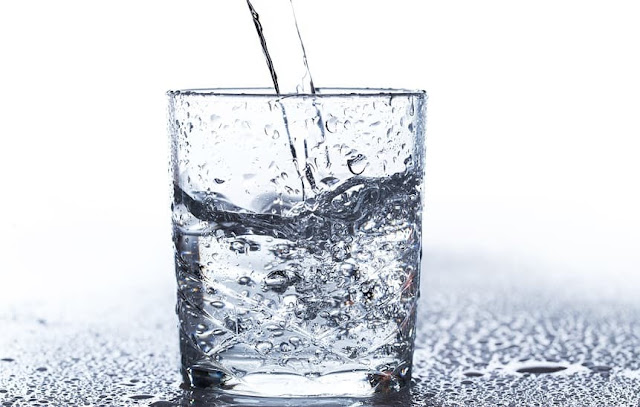The keto diet is a very low-carb, high-fat diet that shares many similarities with the Atkins and low-carb diets.
It involves drastically reducing carbohydrate intake and replacing it with fat. This reduction in carbs puts your body into a metabolic state called ketosis.
When this happens, your body becomes incredibly efficient at burning fat for energy. It also turns fat into ketones in the liver, which can supply energy for the brain.
Ketogenic diets can cause massive reductions in blood sugar and insulin levels and shift the body’s metabolism away from carbs and towards fat and ketones.
Fortunately, following a ketogenic diet doesn’t have to be complicated, confusing, or time-consuming. Let’s take a look at my top 9 steps for getting started on keto.
1-Set macronutrient goals
Protein, fat, and carbs are the three main macronutrients in the diet, and your intake of all three should be closely monitored when following a healthy keto diet.Because the ketogenic diet works by depriving your body of glucose and pushing it into a state of ketosis, it’s incredibly important to calculate your “keto macros” < protein, fat, and carb needs > carefully to ensure success.
There are plenty of keto calculators out there that make it easy to determine exactly how many grams of each that you should be consuming. However, as a general rule of thumb, aim for 30-50 grams of net carbs per day from fiber-rich foods like low-sugar fruits and veggies.
Additionally, be sure that 15-20 percent of your total daily calories are coming from protein with about 70-80 percent of healthy sources of fat.
2-Plan out your meals
Planning your meals in advance can help save time and energy throughout the week while also making it easier to stick to your macronutrient goals.
Mix and match your favorite keto recipes to help fill your diet with nutrient-rich, flavor-packed foods that fit within your daily allotments for carbs and protein. Then, prepare a shopping list and load up on healthy ingredients to use throughout the week.
Related: Top 5 Keto Breakfast Recipes ( Easy & Delicious)
3-Start cutting carbs
Ideally, carb consumption on the keto diet should be limited to 30-50 grams of net carbs per day, which can be calculated by subtracting the grams of fiber in a food from the total grams of carbs.Cutting back on carbs is absolutely essential to reaching ketosis, and even going a few grams over your carb goals can seriously slow your progress. Stick to high-fiber foods like non-starchy vegetables and low-sugar fruits while limiting your intake of sugary snacks, bread, pasta, cereal, and grains.
4-Increase healthy fat intake
Filling up on healthy fats can provide your body with the fuel it needs to produce ketones, which are used for energy when glucose stores start running low.70-80 percent of your daily calories should come from fat, so it’s important to choose wisely and select healthy fats like nuts, coconut oil, ghee, olive oil, and avocados whenever possible.
5-Pick nutritious protein sources
A nutritious keto diet wouldn’t be complete without a moderate amount of high-quality protein, ideally from foods like grass-fed beef, wild-caught fish, or free-range eggs.However, be careful not to go overboard on the protein foods; excess amounts of protein can be converted to glucose by the body, bringing you out of ketosis and setting back your progress.
Try to get around 15-20 percent of daily calories from protein, which is enough to support muscle growth and cell function without compromising your transition into ketosis.
Related: 7 Mistakes To Avoid When You're Doing A Keto Diet
6-Drink plenty of water
Proper hydration is key to the ketogenic diet, especially when you’re first starting out. This is because dehydration can amplify symptoms of the keto flu, which is a term used to describe the side effects often experienced as the body slowly shifts into a state of ketosis. These can include nausea, constipation, headache, stomach pain, and poor concentration.
7-Replete your electrolytes
On the ketogenic diet, your body tends to lose electrolytes much more rapidly as the kidneys begin quickly flushing out extra sodium through the urine. This can cause electrolyte levels to plummet, which can worsen keto flu symptoms and cause side effects like fatigue, brain fog, and indigestion.Incorporating a good variety of keto-friendly fruits and vegetables into your diet can help deplete your electrolytes to curb the keto flu. Coconut water and sea salt are also great add-ons for a quick and convenient boost of electrolytes like magnesium, potassium, and sodium.
8-Stay active
Diet is just one piece of the puzzle when it comes to better health. In fact, getting plenty of physical activity is just as important when it comes to weight loss, heart health, and disease prevention.
It’s typically recommended to squeeze in at least 150 minutes of moderate-intensity activity or 75 minutes of vigorous activity per week, with at least two sessions of resistance training per week as well.
Jogging, swimming, cycling, and hiking are a few examples of easy and fun ways to fit more physical activity into your day.
9-Maintain a healthy lifestyle
Besides switching up what you’re putting on your plate, there are several other lifestyle modifications you may want to consider. For best results, keep stress levels to a minimum by practicing relaxation techniques such as meditation or yoga.Sleep can also have an impact on overall wellness, so be sure to set a regular sleep schedule and shoot for at least eight hours of sleep each night.




